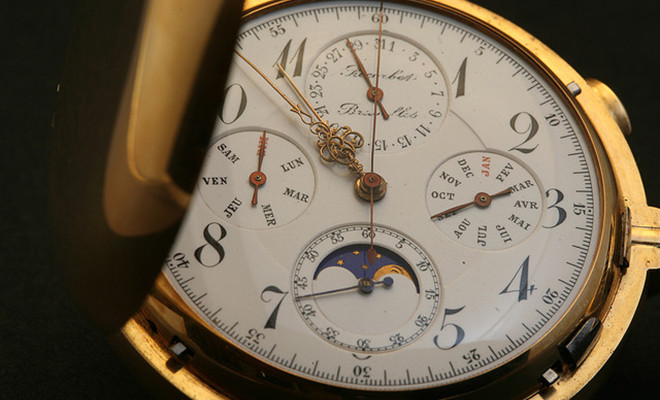 photo credit: John Linwood
photo credit: John Linwood
Watches
EVERYTHING You’ve Ever Wanted to Know About the Pocket Watch
Whether you’re an avid watch collector or just an individual interested in the history of the pocket watch, there’s a long and interesting story behind how one of the world’s most popular accessories came into existence that you’ve got to hear. Pocket watches have been around since at least the 14th century, and over the years they have evolved into the timepiece we know today. With time, watches in general have shrunk in size (and in use according to some) and have incorporated new types of technology to make them more accurate.
The Pocket Watch.
A pocket watch is a type of timepiece that is designed to be worn within a pocket. Unlike regular watches, which have bands and are made to be strapped to the wrist, the pocket watch is protected from the elements by the clothing of the wearer. Pocket watches date back to a time before wrist watches and they were even considered the most common type of timepiece until just after World War I when wrist watches became more popular.
The pocket watch is traditionally secured to a waistcoat, lapel or belt loop with a chain, leather strap or other type of fixture. This prevents the watches from being dropped or easily stolen. The first pocket watches also included a protective cover that prevented the face from becoming scratched or shattered. The chains and covers were usually decorated with either silver or coloured enamel. Coats of arms or seals of special societies were commonly used as decorations on the watches.
Some of the first pocket watches also included practical gadgets in their design like winding keys, a vesta case or even a cigar cutter. These added gadgets increased the usability of the watch and gave it an added appeal to consumers. Pocket watches with built-in gadgets are also popular amongst watch collectors as the added gadget tells a story about the time during which the pocket watch was produced and in use.
One of the first historical references of the pocket watch can be found in a letter dated in November 1462 from an Italian by the name of Bartholomew Manfredi. The watchmaker sent the letter to the Marchese di Mantova Federico Gonzaga and detailed a pocket clock that belonged to a mutual acquaintance, the Duke of Modena. It was after this letter was sent that spring-driven pocket clocks first appeared in Italy. By 1524 the practice spread and Peter Henlein, a master locksmith, began manufacturing watches in Germany. Watch production spread to the rest of the world, gaining popularity rapidly. Early pocket watches only had an hour hand as the minute hand did not appear on the clock face until the late 17th century. In the late 1830s, the first American pocket watches were produced using machine-made parts.
photo credit: Pocket Watches
Pocket Watch Styles
There are 2 basic styles of pocket watches available: open-face and hinged. Hinged pocket watches are sometimes called Hunter pocket watches. If the watch has a hunter-case, then the watch will use a hunter-style or geneva-style crystal. Hunter-style crystals are typically thin and fragile. They can be flat or slightly convex, but they must always be low enough to allow the watch lid to close. Replacing a broken hunter glass is difficult as it must be high enough to not interfere with the arms of the watch, but low enough not to impede the cover. Typically, the glass of a hunter style watch is only 0.4mm to 0.5mm thick, so it winds up being quite fragile. This is one reason hunter watches should never be closed by pressing on the center of the cover.
The other type of watch is the open-faced watch. These watches have no cover and the dial is exposed at all times. The dial is protected by a slightly thicker glass cover than is found on hinged pocket watches. Many vintage styles that have survived to today have an open style. The crystal of these watches have a bevelled outer edge. It was not a stylistic choice – it actually gives the watch dial a defined outer edge. Most open faced watches have a bevelled crystal ranging between 1mm and 1.5mm though some can be as thick as 2.5mm.
While most open faced and hunter style watches are made with a metal case, briefly ceramic and even glass cases were used. Glass pocket watches are usually only displayed as the glass makes them quite fragile. It also provides a clear and unhindered view of the watch’s inner workings, which many watch enthusiasts enjoy.
Ceramic watches made an appearance briefly as well. The ceramic cases were more fragile than metal cases, making them less practical. However, the ceramic case could be painted with various crests and scenes, for one-of-a-kind pieces that quickly gained collectibility. Ceramic watch cases were also heavier than metal cases, making them more difficult to carry and store. They eventually declined in popularity due to practical reasons.
Other unusual watches include those with painted dials. Whether it’s a Harley or a sunset, painted dial watches are typically purchased for the art on the dial rather than the quality of the timepiece. Sailors had a history of purchasing painted-dial watches containing images of ladies of ill repute. Images can be added to plain watch dials by specialists that specialise in creating images on the dial of a watch.
History
The first watches worn were designed in the 16th century in Europe. They were sized between a traditional clock and what we think of as watches today. The “clock-watch” was made to be attached to clothing or worn on a chain around the neck. These designs were quite heavy and cumbersome. Most were made with a drum-shaped brass cylinder that was engraved and ornamented. The first watches only had an hour hand and lacked the glass covering that has become almost universal in watch design. They did however include a hinged cover. Decorative cut-outs allowed the watch to be read even with the cover in place.
The movement of the watch was made with either iron or steel and the parts were held together with specially shaped wedges as screws were not used until after 1550. Alarms were popular features in the watches. Unusual shaped watches soon became popular after the first clock-watches were introduced and designs featuring animals, stars, flowers, insects and religious symbols were soon made.
In the 17th century, men began to desire to wear their watches in their pockets instead of around their necks. It is believed that Charles II of England first introduced this trend in 1675 when he made waistcoats popular. In order to fit into pockets, the watches had to shrink in size. They soon became round, flattened and smooth. Glass found its way into the watch design as a cover for the dial sometime around 1610. The chain that was once used to hang the watch around the neck shortened and the chain was now used to secure the watch to the vest of the wearer.
Watches were considered a luxury item until the second half of the 18th century. Newspapers in England often included advertisements for stolen watches and rewards for helping recover the timepieces were often hefty. By the end of the 18th century, watches were starting to become more common and cheaper designs were being produced for sailors. This is also the time when paintings on the dials became popular.
Until the 1720s, most watch movements were designed after the verge escapement which was used in most large public clocks. This type of movement involved a lot of friction and lacked protective jewelling that kept the contacting surfaces from wearing. Because of this, verge watches couldn’t achieve the degree of accuracy that the public demanded. Many ran fast, gaining as much as an hour a day or more. In response to the inaccurate verge movement, a cylinder escapement was added in the 18th century. Towards the end of the 18th century, a lever escapement was used in a limited number of watches including a Swiss collection made by Josiah Emery. With the improved movements, common watches could remain accurate to within a minute each day. Lever watches are still popular today.
Across the pond, in America, the American Watch Company located in Waltham, Massachusetts, introduced what is known as the Waltham Model 57. This watch was introduced in 1857 and was the first to use interchangeable parts. That tiny improvement cut down on the cost of manufacturing and repairing the timepieces. The watches were made in coin silver, which is 90 percent pure, unlike sterling silver. By 1865 the American Watch Company was turning out more than 50,000 watches each year. This advancement allowed the company to overtake the Swiss watchmaking industry, dominating the market for the first time in history. In response, the Swiss raised the quality of their watches to help establish themselves as a leader in accuracy, rather than affordability.
Connection to American Railroads
In the last half of the 19th century, railroading was gaining popularity in America. New tracks were being laid and more people were travelling by train than ever before. This rise in railroading led to a more widespread use of pocket watches by the engineers. In 1891, a large train crash occurred on the Lake Shore and Michigan Southern Railway because one of the engineers’ watches paused for a mere 4 minutes. In response to this accident, Webb C. Ball was commissioned by railroad officials as the Chief Time Inspector. He helped create precision standards and an inspection system for railroad chronometers. In 1893, an official set of standards for pocket watches became an official standard used in railroading. Production of railroad-grade pocket watches began soon after.

The standards for railroad watches were:
- The watch must be open faced.
- It must be a size 16s or 18s.
- It must have a minimum of 17 jewels*
- It must be adjusted to at least 5 positions.
- It must keep time accurately to within 30 seconds per week.
- It must be adjusted to temperatures of 34 to 100F.
- It must have a double roller escapement.
- It must have a steel escape wheel.
- It must be lever set with a winding stem at 12 o’clock.
- It must have black Arabic numerals on a white dial.
*After WW2, the requirement was 21 jewels for some railroads.
Types of Pocket Watches
As mentioned above, pocket watches come in 2 main styles. There’s the hunter-case pocket watch and the open-face pocket watch.
Open face pocket watches lack a metal cover that protects the dial crystal. Most open-faced watches have a pendant at the 12:00 mark and a sub-second dial located at 6:00. Sometimes, a watch intended for a hunting case will be put into an open-faced case. When this happens, the resulting watch is known as a “sidewinder”.
A hunter-case watch is one with a spring hinged lid that closes on the dial and crystal. The lid protects the watch from scratches, dust and other types of debris. Most antique and vintage hunter-case watches have their lid hinges positioned at the 9 o’clock position. The crown, stem and bow of the watch are positioned at the 3 o’clock position. Modern hunter-case pocket watches favour hinges at the 6 o’clock position with the stem, crown and bow at the 12 o’clock position. With both hunter-case and open-faced watches, the sub-seconds dial is always at the 6 o’clock position.
The demi-hunter watch is a style with an outer lid that has a glass panel on it that allows for the hands to be viewed even with the lid shut. The hours are marked, typically in blue enamel, on the outside of the lid. This allows the watch to be read without having to open it.
Antiques and Collectors
Pocket watch use is said to have peaked in the 19th century when the manufacture and design of the watches was at its height. Companies like Elgin, Waltham, Hamilton and Illinois were creating new and innovative watches, improving accuracy and pushing the rules of design. Railroad conductors used watches still to time their trains, creating a need for highly accurate, precision pieces.
Hunting case watches became popular in the 19th century as well. These types of watches had a cover that could be flipped open when you wanted to view the time. By 1900, the open-face design was favoured over the hunting case.
Antique pocket watch collectors look for the watch’s movement and the case. The cases are usually made of metals like gold or silver. Some are gold-filled with 2 sheets of gold surrounding a layer of brass. Silver coloured materials are also not uncommon. Silveride, a nickel based material is one such example. While gold watches are always appealing to collectors, the value of the watch has a lot to do with the features and what was appropriate and sought after at the time. Movements with higher numbers of jewels and detailed railroad pocket watches are both highly desirable for collectors, as are limited-edition watches.
A pocket watch is typically only considered an antique if it is over 75 years old. For that reason, some watches are old by common standards, but are far from being considered an antique. Most collectors can guess the age of the watch within a few years, simply by looking at the features and style of the timepiece as pocket watch history has made a steady progression in terms of technology and prevailing styles.

Movements and Technical Specifications
There are many different types of watch movements that have been used over the years. The first is the key-wind, key-set movement. The first pocket watches were created in the 16th century and up until the end of the 19th century, most had key-wind and key-set movements. This required a watch key to wind the watch and set the time. Typically, the back of the case would open and there would be a place to insert the key. The key would go into the winding-arbor, which was over the winding-wheel to wind the mainspring. Sometimes the key would be inserted into the setting arbor, which was connected to the minute-wheel and had the ability to turn the hands and set the time. Rarely, a watch would be made with the setting-arbor at the front of the design, so removing the dial cover was necessary in order to set the time.
In order to improve isochronism, many key-wind movements make use of a “fusee“. The fusee is a specialized conical pulley that attaches to a fine spring in the main barrel of the watch. When the spring is wound up it is at the highest torque point. The full length of the chain is wrapped around the fusee at this point and the force being exerted on the spring is focused on the smallest part of the fusee cone. As the spring slowly unwinds, the torque decreases and the chain is released back into the main barrel. This allows for a more uniform amount of torque on the watch spring which results in a greater balance and better timekeeping. A fusee is a necessary part of watches that use a verge escapement.
It is worth nothing that key-wind watches are also seen with conventional barrels, particularly in designs that were made in America.
The second type of movement that is commonly found in watches is the stem-wind stem-set movement. The movement was invented in 1842 by Adrien Philippe. It was commercialized by Patek Philippe and Co. in the 1850s. The stem-wind movement does away with watch keys, which were necessary for previous styles of watch movements. The first stem-wind and stem-set watches were sold during the Great Exhibition in London in 1851. The first people to buy the design were Queen Victoria and Prince Albert. Amongst vintage and modern pocket watches, the stem-set movement is the most common type.
When manufacturers began to transition to the use of stem-wind stem-set watches, they stopped using fuse chain-driven watches. Instead of using the fusee timing, they opted for a mainspring of better quality. It was made of spring steel, which was commonly known as the “going barrel” and allowed for a more even release of power. The result was a watch with even greater accuracy.
The third type of movement is the stem-wind lever-set movement. Railroad watches manufactured after 1908 were required to use this type of movement. Pocket watches using a stem-wind lever-set movement were set by opening the crystal dial cover and pulling out a special setting-lever. Some hunter cases make the lever accessible without removing the crystal covering. The lever is usually found at either the 10 or 2 o’clock positions in open-face pocket watches and at 5 o’clock on hunter watches. Once pulled, the lever allowed the crown to be turned to set the time. The lever was then pushed back in and the watch was reassembled. This method of setting was preferred by major railroads as it made accidentally changing the time nearly impossible. After 1908, lever setting was a required step for new watches entering service on American-owned railroads.
A fourth type of movement is the stem-wind pin-set movement. Pocket watches with this type of movement have a small pin or knob next to the watch that needs to be pressed and then turned in order to set the time. When finished, the pin is released and the time is officially set. This type of movement is also sometimes referred t as the nail set, since the set button required a small object for pressing.
The fifth type of common movement is the jewelled movement. Most high-end watches are made with jeweled movements. These types of watches require a small, shaped piece of a hard mineral to operate. Ruby and sapphire are commonly used. Diamond, garnets and glass are also seen, though less commonly than other types of minerals. Low-grade natural jewels that are unsuitable for jewelry use are most often used. In order to make the jewel suitable for use in the watch movement, a small hole is carefully shaped and created. The hole is used to hold the pivot of an arbor. Using a jewel for this task creates a smooth, hard surface that is extremely wear-resistant and low-friction. That makes the watch’s movement last longer and increases value. Other jewel shapes and types may be used as well including cap jewels, roller jewels and pallet jewels.
Cap jewels are always paired with hole jewels and they are always used with a conically shaped pivot piece. The cap jewel is used to top the hole jewel in order to control the movement of the arbor and prevent the shoulder of the pivot from contacting the hole jewel. In a properly functioning system, the pivot bears on the cap jewel as a pin point on a thin film of oil. Using the combination of a cap jewel and a hole jewel reduces friction and increases performance of the system.
The roller jewel, sometimes referred to as the impulse jewel or the impulse pin, is a thin rod of a gem. It is usually made of ruby or sapphire and is often shaped like the letter “D”. The roller jewel works by coupling the motion of the balance wheel to that of the pallet fork.
Pallet jewels are made to interact with the escape wheel within the movement. Every second they lock the gear train of the watch 5 times, transferring power to the balance wheel.
Jewelled watches that employ lever escapements usually contain at least 7 jewels. The 7 jewels are: 2 hole jewels; 2 cap jewels for the pivots of the balance wheel arbor, 1 roller jewel and 2 pallet jewels. It is possible for a watch to contain more than 7 jewels. Additional jewels are added to other pivots, beginning with the pallet fork followed by the escape wheel, the fourth wheel, the third wheel and then the centre wheel. An additional 8 jewels are added with this method for 15 jewels total. Adding jewels to the centre wheel adds 2 additional jewelled locations to the list for a total of 17 jewelled spots.
American watchmakers decided to only incorporate jewels to the third wheel (the visible wheel) of low-end watches. This move gave a total of 11 jewels with the look of a 15-jewel movement. This move saved money and time, netting bigger profits for watchmakers as 15-jewel movements don’t require clear labelling and it is often up to the consumer to visually inspect the watch for the number of jewels.
For movements that use more than 17 jewels, the additional pieces are almost always in the form of cap jewels. Some Elgin and Waltham watches have 19 jewels and include a jewelled mainspring barrel. A 19-jewel watch can also have additional cap jewels on the escape wheel. There are also 21-jewel watches with cap jewels on the pallet fork and escape wheel. Watches with 23 jewels have a jewelled barrel and fully capped escapement. Adding more than 17 jewels does not appear to impact the quality of the watch’s timekeeping.
Many watchmakers and consumers associate higher jewel counts with better timekeeping. While many expensive movements have higher jewel counts, the jewels are not the sole reason for the increased cost. Jewels used for timepieces have little to no monetary value and after 17, they play little role in the quality of the timekeeping. The real price increase comes with the quality and finishing of the watch, along with an increased number of adjustments.
Adjustments
A pocket watch will often have the word “adjusted” or “adjusted to n positions” engraved on it. That means that the watch has been carefully tuned to keep time at various positions and conditions. There are 8 adjustments possible:
Dial up.
Dial down.
Pendant up.
Pendant down.
Pendant left.
Pendant right.
Temperature (from 34–100 degrees Fahrenheit).
Isochronism (the ability of the watch to keep time, regardless of the mainspring’s level of tension).
Adjustments are made by carefully poising the balance hairspring system while altering the shape and polish on the balance pivots. This requires equalizing the effect of gravity on the watch while it is in various positions. Position adjustments are made through careful adjustments of each of the 3 factors and then testing on a timing machine. Adjusting a watch requires many hours of work which adds to the total cost of the timepiece. Most medium-grade watches are adjusted to 3 positions (dial up, dial down, pendant up) while high-end watches are usually adjusted to 5 positions (dial up, dial-down-stem-up, stem left and stem right) or sometimes even all 6 positions. Railroad grade watches were required after 1908 to be adjusted to 5 positions.
Early watch designs made use of a solid steel balance. The balance expanded when temperatures rose, leading to an increase in size. This change in size altered the movement of inertia and changed the timing of the watch. The hairspring could also lengthen in warm weather, decreasing the spring constant. The problem was solved by adding a compensation balance. This piece consists of a ring of steel sandwiched to a ring of brass. The rings were split in 2 places and then added to the movement. The balance was made to decrease in size with heating to compensate for the lengthening of the hairspring. Careful adjusting of the balancing screws could be done to allow the watch to keep a constant time at both hot and cool temperatures. However, when not at one end or the other of the temperature spectrum, these types of watches usually ran slow. That problem was solved by adding special alloys to the balance and hairspring which were immune to thermal expansion.
To improve the system, an isochronism was added. The isochromism used a stopworks, or a system that was meant to allow the mainspring to operate only within a specific range. The most common method of achieving the so-called isochronism is through the use of a Breguet overcoil. The coil replaces a portion of the hairspring and allows the outermost turn of the hairspring to occur in a different plane than the rest of the spring. This allows it to breathe more evenly and move symmetrically. There are 2 types of overcools found: the gradual overcoil and the z-bend. The gradual overcool uses 2 gradual twists on the hairspring to form the rise to the second plane while the z-bend achieves the same thing by a network of kinks. The kinked method is more difficult to achieve. Because overcools are rather difficult to achieve, modern watchmakers have opted for the dogleg, which involves a network of sharp bends to move part of the outer most coil out of the way of the rest of the spring.
Decline in Popularity of Pocket Watches
Since the invention of the cell phone, the popularity of watches and particularly pocket watches has been on the decline. The mobile phone now occupies the space a pocket watch would have taken, proving an accurate and easy-to-use time holder with several other functions. There are still individuals that collect pocket watches, so high-end pieces are still in production, though at a much lower number than in years gone by.
The Colibri pocket watch, manufactured in the mid-1990s is one of the best-selling modern pocket watches. It has a back case with an extra hinge cover that allows the watch to stand upright on a desk or other flat surface.
For those that still care to carry a watch, the wristwatch has far surpassed the pocket watch in terms of popularity. Up until the beginning of the 20th century, the pocket watch was the premier timepiece on the market. Pocket watches were taken over by wristwatches during World War I when army officers began to use the wrist style watches for accessibility reasons. They were briefly known as trench watches because of their military connection.
Pocket watches ceased to be part of a professional dress around 1943. It was at this time that the British Royal Navy gave their sailors Waltham pocket watches with 9-jewel movements, black dials and radium coated numbers for night-time viewing. The Waltham company also supplied watches to the Canadian military. Military contracts kept manufacturers producing pocket watches during this time.
For a few years in the 1970s and 1980s, pocket watches returned to style as men began taking a greater interest in their dress. Some men took to placing a timepiece in the vest pocket of their suit and as a result, some watch manufacturers began producing pocket watches once again. However, fashion trends have changed again and the vest lost its popular. In modern times, the only place left to carry a pocket watch is in the trouser pocket, which is now occupied by mobile phones and other gadgets (unless you’re a fan of 3 piece suits and wear a vest).
It is worth nothing that in some areas, a gold-cased pocket watch is a traditional retirement gift. It is often given by the employees employer and is usually engraved.
Modern Pocket Watches
Despite their rather sudden downturn in popularity, there is still a place in the modern world for the pocket watch. When most people think of pocket watches, they think of the old styles where there was a chain connecting the watch to a pocket on a vest. Today’s pocket watches are completely different and re-designed to work for modern men. They are popular as wedding and graduation gifts.
Amongst modern pocket watches, there is a subset called the Young Pocket Watch. Young men are buying these styles for themselves as a sign of their good style and professional status. These pocket watches routinely have multiple purposes and are a conversation starter.
For example, glass backed pocket watches allow you to actually see the working movements and the ticking mechanisms. These are fun for young engineers or people with a general interest in timekeeping or mechanics. Young men buy these watches as collectors items more than anything. There are even watches with built-in bottle openers or small compasses. Young hipsters that are trying to escape the modern technological movement buy these types of watches as a way to break free of the hold that mobile phones have on young people. Many of these watches are designed with a clip to be hung from a belt loop.
There are also young men that are buying pocket watches that are waterproof. This allows them to keep their timepiece on them, even when conditions may become wet or too extreme for a mobile phone. Watches that are waterproof to 30 meters are safe to use while swimming, but shouldn’t be used while diving. Water resistant means it can go under water for a short amount of time and it can withstand water being splashed on it. It shouldn’t be used for prolonged use in the water – like people who enjoy swimming, but it’s great for kayakers who may occasionally find themselves briefly under water if their boat tips over.
Another defining characteristic of pocket watches being aimed at young men is that they’re inexpensive. It’s not the end of the world if the watch is damaged, stolen or broken. Being that it’s not as valuable, it’s more attractive to carry in high-crime areas and the streets around many college areas. The pocket watch won’t make you target for crime the way that the newest mobile phone would.
Ladies Pocket Watches
While most pocket watches are designed for men, there are some styles that have been specifically designed for ladies. These types of watches are on the more modern side as the notion of customizing a pocket watch for a lady is a relatively new idea. Watchmakers have expanded their lines to fit the needs of women in an effort to revitalize the pocket watch and boost slumping sales.
Ladies pocket watches are smaller and more delicate than versions designed for men. They tend to be made of metal and incorporate gems and engravings throughout the piece. The watches are usually attached to a clip that can be attached to a purse or a keyring for convenience.
Like mens’ styles, ladies’ pocket watches must be accurate. Advances in watch technology has made it easy to make an accurate and affordable watch. Ladies’ pocket watches can be found in jewellery stores or mass merchandisers. Online retailers and specialty clothing shops are also popular places to find the watches.
How to Wear a Pocket Watch
Whether you’re the proud owner of an antique pocket watch or a relatively new convert picking up on the trend of Young Pocket Watches, there is a proper way for the timepiece to be worn. Pocket watches can help bring distinction to your outfit and the pocket watch design can be a way to make your outfit distinct from the crowd. Unlike the regular wrist watches, pocket watches bring an element of refinement to any outfit, even if it’s not the most expensive watch available. Learning to wear a pocket watch properly requires attention to method and a critical eye of your wardrobe as a whole.
Originally, pocket watches were a high-class fashion icon. They were worn as part of a suit or formal wear and typically that type of outfit would include a vest. The watch would sit in the vest pocket, easily accessible, but out of the way. Today, vests are usually omitted from most formal wear, leaving users to have to keep the watches in their trouser pocket. It’s important to make sure your pants aren’t too tight if you plan to wear it this way as the watch could easily slip out of your pocket without much of a struggle.
Another option: if you’re not wearing a vest with your outfit, connect the watch to the belt or use the front and back pockets with the watch in the front pocket and the chain or fob in the back. Always place the watch in the pocket nearest your non-dominant hand. Pocket watches are meant to be practical, so it’s ideal to be able to write while holding the timepieces. Right-handed people should keep the pocket watch in a left pocket while left-handed people should keep their watch in a right pocket.
Modern or Young Pocket Watches have less rules to be worn properly. If the watch has a clip, it can simply be attached anywhere. Belt loops are popular choices, though attaching the item to a backpack or portable water supply is not uncommon. Bikers sometimes attach their watches to their bicycles to read on the road. If the watch has a compass attached, you’ll want it within easy reach, so keep that in mind while selecting a place for it.
Buying a Pocket Watch
When buying a pocket watch there are several things that should be taken into consideration. First and foremost it’s important to decide between an antique watch, a used watch and a new watch. Antique watches are 75 years old or older. Used watches encompass models that aren’t brand new, but are younger than 75 years old. New watches are the ones purchased in retail stores.
If you’re interested in an antique pocket watch, the first step is finding an antique dealer. You’ll have the best luck finding an older watch in good condition at one of these types of stores. Occasionally, you can also find an antique piece at garage or estate sales. If you go through a dealer, be ready to pay the full value of the watch as most antique dealers are up-to-date on values. With a little bit of haggling you should be able to negotiate a price that’s comfortable for both you and the dealer. Look for any scratches or flaws on the watch that you can use to help lower the price. Alternatively, you may be able to find a deal at a local pawn shop.
Used pocket watches are fairly easy to find. Yard sales, thrift shops and jewellery consignment stores will all be great sources. You can save a lot of money by purchasing a used watch that isn’t quite old enough to qualify as an antique, but is still used. Keep in mind that used watches may have mechanical or cosmetic flaws, so look the timepiece over carefully before committing to purchase it. Some collectors find used watches that were in limited production with the express purpose of holding it until it becomes an antique and the value increases.
New pocket watches are the easiest of the styles to find because they’re available in retail stores. However, new pocket watches often come with high price tags because they aren’t in mass production anymore. New pocket watches are often designed as an elite status symbol, with the exception of Young Pocket Watches. Many manufacturers of pocket watches incorporate high-end metals and gems that increase the cost of the watch. You’ll find the greatest selection of new pocket watches online.
Other Information
When shopping for pocket watches there are a few things you should keep in mind. First and foremost, you’ll want a watch that’s accurate. Some historical models are not accurate because of their inferior technology, so if you plan to use the watch, an antique model may not always be the best bet.
Heirloom watches are good for both collectors and consumers alike. They can be worn with pride and then passed on to the next generation. When choosing a brand new pocket watch, always ask yourself if it’s something you’d leave to a future generation. If the answer is no, you may need to consider expanding your search.
Sometimes just the act of searching for the perfect pocket watch can be more fun than actually obtaining it. There are entire communities of people dedicated to finding antique or rare pocket watches. Joining a community of watch collectors is a great way to find other people that share the passion of stylish timepiece collecting.
Wrapping it up.
And there you have it folks – an in-depth look into the world of pocket watches. They’re not for everyone but they certainly do still tickle the fancy of some folk…us included.
What type of pocket watch would interest you the most?


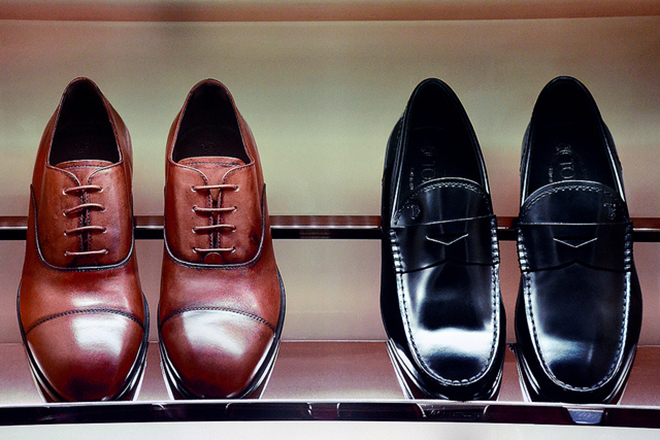

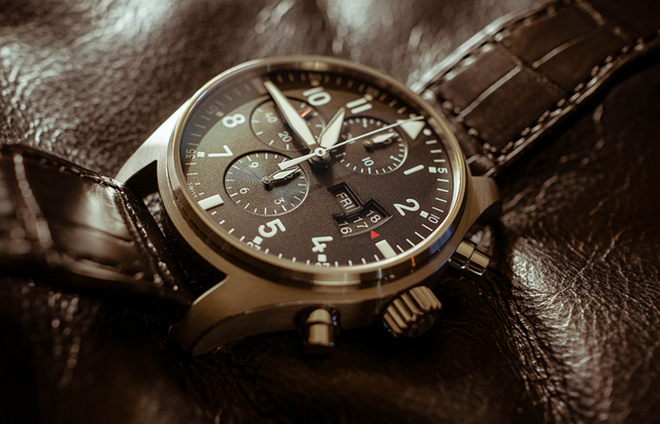
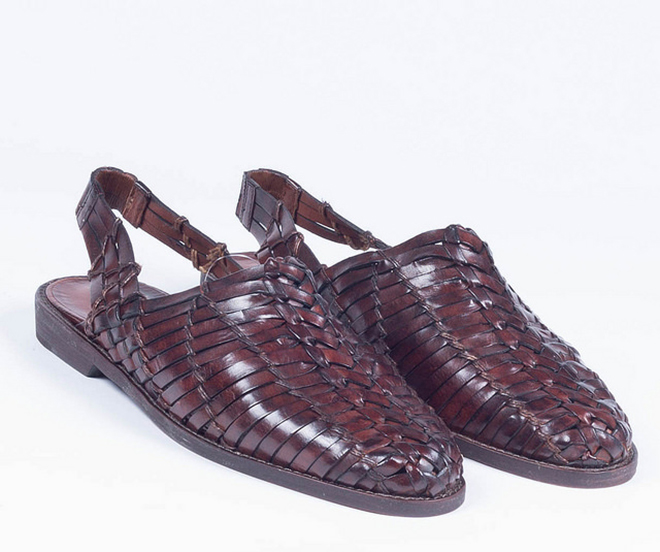

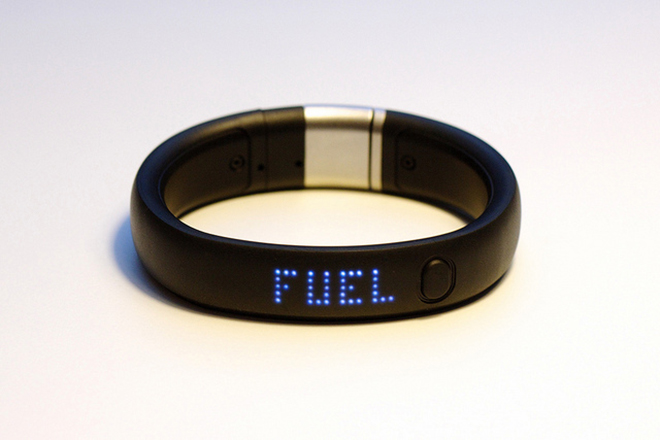


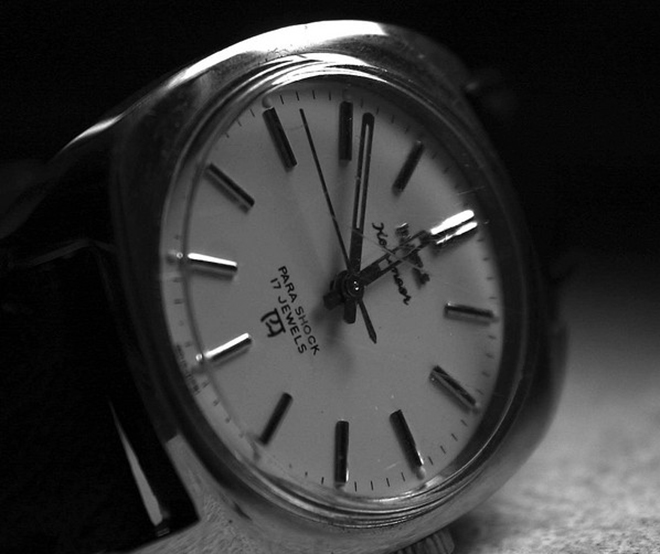
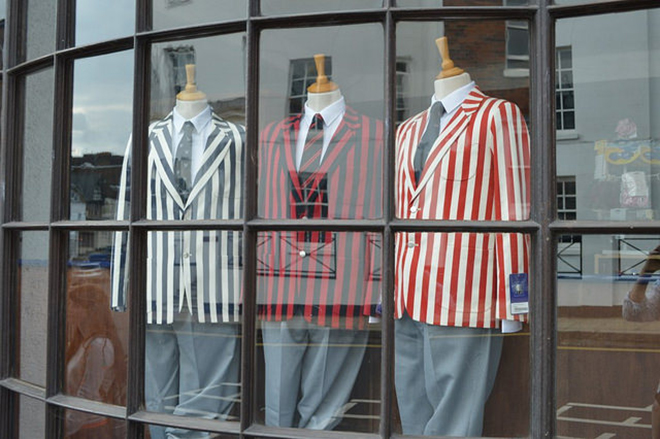
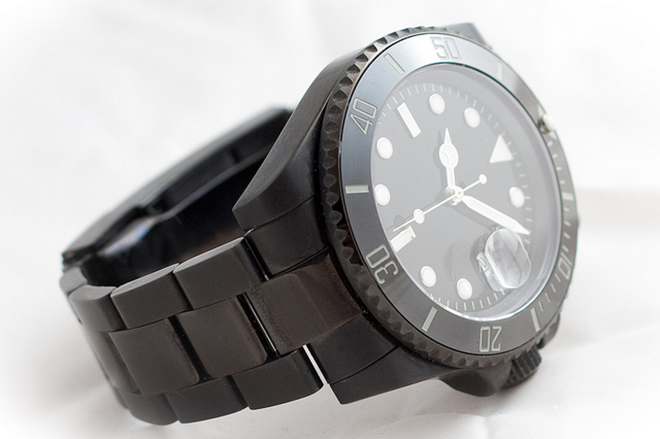
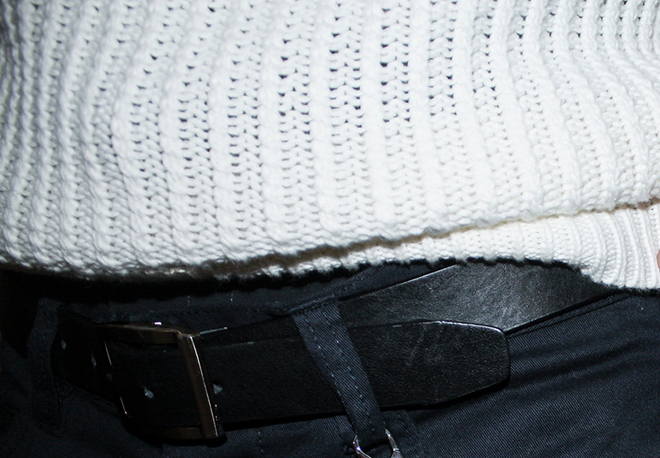
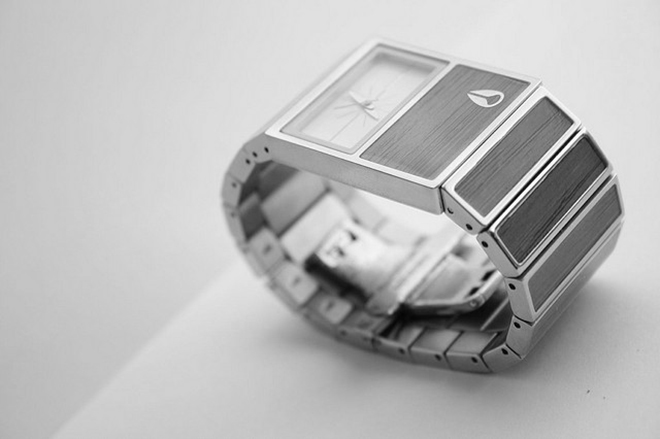














28 Comments